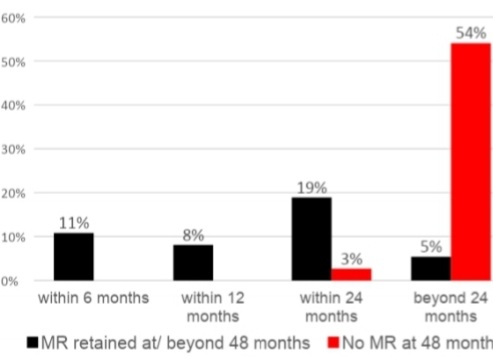
Contributions
Abstract: PB1532
Type: Publication Only
Session title: Chronic myeloid leukemia - Clinical
Background
BCR-ABL fusion gene, the oncogenic driver of CML, results from a translocation between short arms of chromosome 9 and 22. Monitoring of CML patients during treatment is essential, not only for tailoring the treatment but also to detect early relapse to enable timely intervention. Commonly used methods for detection of residual disease are conventional karyotyping, FISH and molecular methods. In this study, we compared FISH with QRT-PCR for detection of residual disease in CML.
Aims
To demonstrate correlation between FISH and Quantitative PCR for BCR ABL1
Methods
CML patients on tyrosine kinase inhibitor (TKI) therapy and on regular follow up at University Kebangsaan Malaysia Medical Center (UKMMC) were selected. A comparative study was conducted between FISH and QRT-PCR for BCR-ABL transcripts at diagnosis and during follow-up.
Results
There was good correlation between FISH and QRT-PCR for BCR-ABL. At 6th month of follow-up post diagnosis, FISH had a sensitivity of 83.3% and specificity of 65.2% (k >0.339, p<0.033). At 12th month, the sensitivity of FISH was 83% and the specificity was 59.1% (k >0.286, p <0.065). Similarly, at the 24th month, FISH had a sensitivity of 100% and specificity of 68.8% (k >0.642, p<0.000).

Conclusion
QRT-PCR was the most reliable and therefore the current gold-standard method to monitor residual disease in CML patients. In our study FISH analysis was demonstrated to be a reliable investigation that should be considered with QRT-PCR for BCR-ABL. It was also demonstrated that time to achievement of molecular and cytogenetic targets i.e. MMR and CCyR respectively, were reliable indicators
to detect the long-term outcome of the disease.
Keyword(s): Chronic myeloid leukemia, FISH, MRD, PCR
Abstract: PB1532
Type: Publication Only
Session title: Chronic myeloid leukemia - Clinical
Background
BCR-ABL fusion gene, the oncogenic driver of CML, results from a translocation between short arms of chromosome 9 and 22. Monitoring of CML patients during treatment is essential, not only for tailoring the treatment but also to detect early relapse to enable timely intervention. Commonly used methods for detection of residual disease are conventional karyotyping, FISH and molecular methods. In this study, we compared FISH with QRT-PCR for detection of residual disease in CML.
Aims
To demonstrate correlation between FISH and Quantitative PCR for BCR ABL1
Methods
CML patients on tyrosine kinase inhibitor (TKI) therapy and on regular follow up at University Kebangsaan Malaysia Medical Center (UKMMC) were selected. A comparative study was conducted between FISH and QRT-PCR for BCR-ABL transcripts at diagnosis and during follow-up.
Results
There was good correlation between FISH and QRT-PCR for BCR-ABL. At 6th month of follow-up post diagnosis, FISH had a sensitivity of 83.3% and specificity of 65.2% (k >0.339, p<0.033). At 12th month, the sensitivity of FISH was 83% and the specificity was 59.1% (k >0.286, p <0.065). Similarly, at the 24th month, FISH had a sensitivity of 100% and specificity of 68.8% (k >0.642, p<0.000).

Conclusion
QRT-PCR was the most reliable and therefore the current gold-standard method to monitor residual disease in CML patients. In our study FISH analysis was demonstrated to be a reliable investigation that should be considered with QRT-PCR for BCR-ABL. It was also demonstrated that time to achievement of molecular and cytogenetic targets i.e. MMR and CCyR respectively, were reliable indicators
to detect the long-term outcome of the disease.
Keyword(s): Chronic myeloid leukemia, FISH, MRD, PCR


